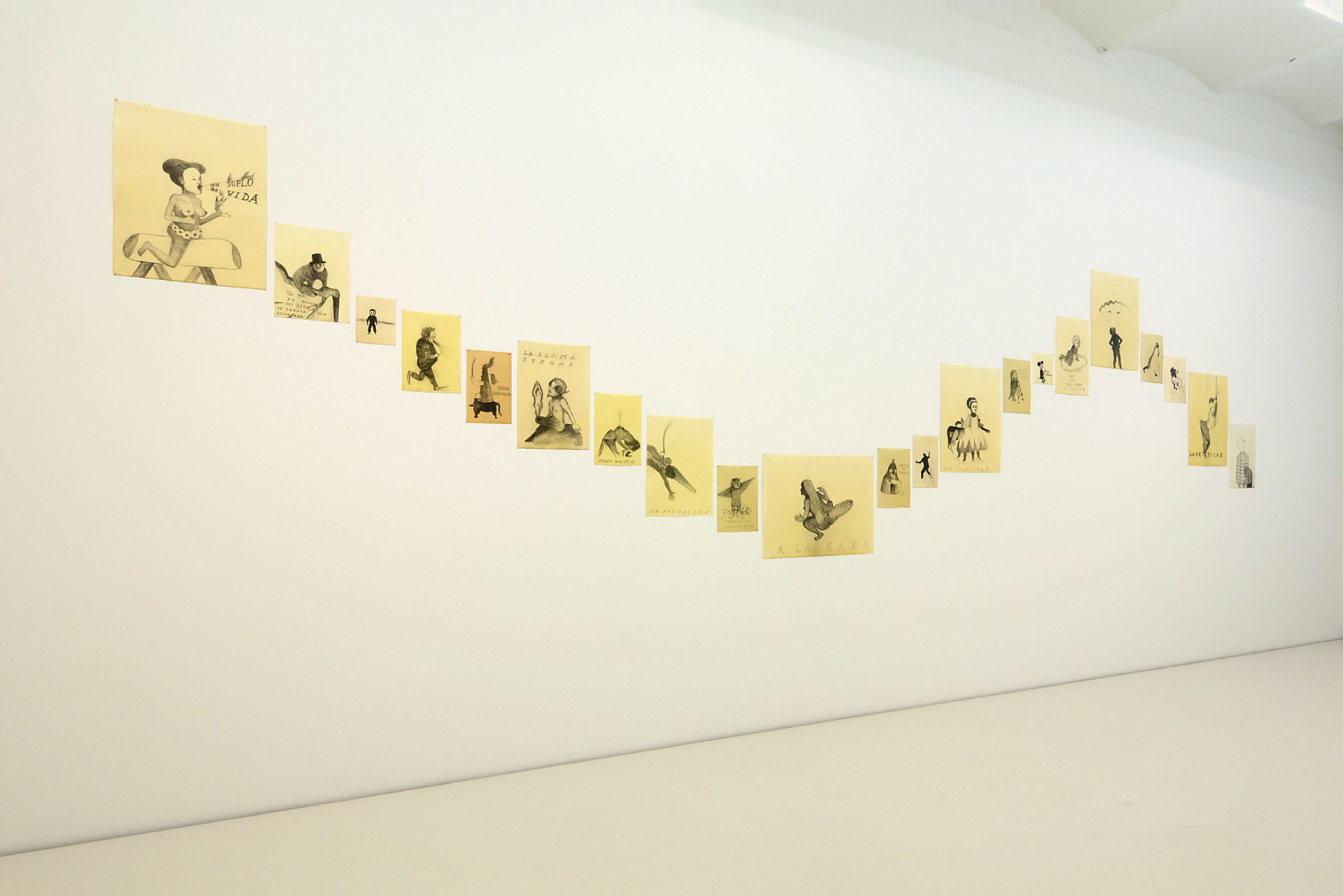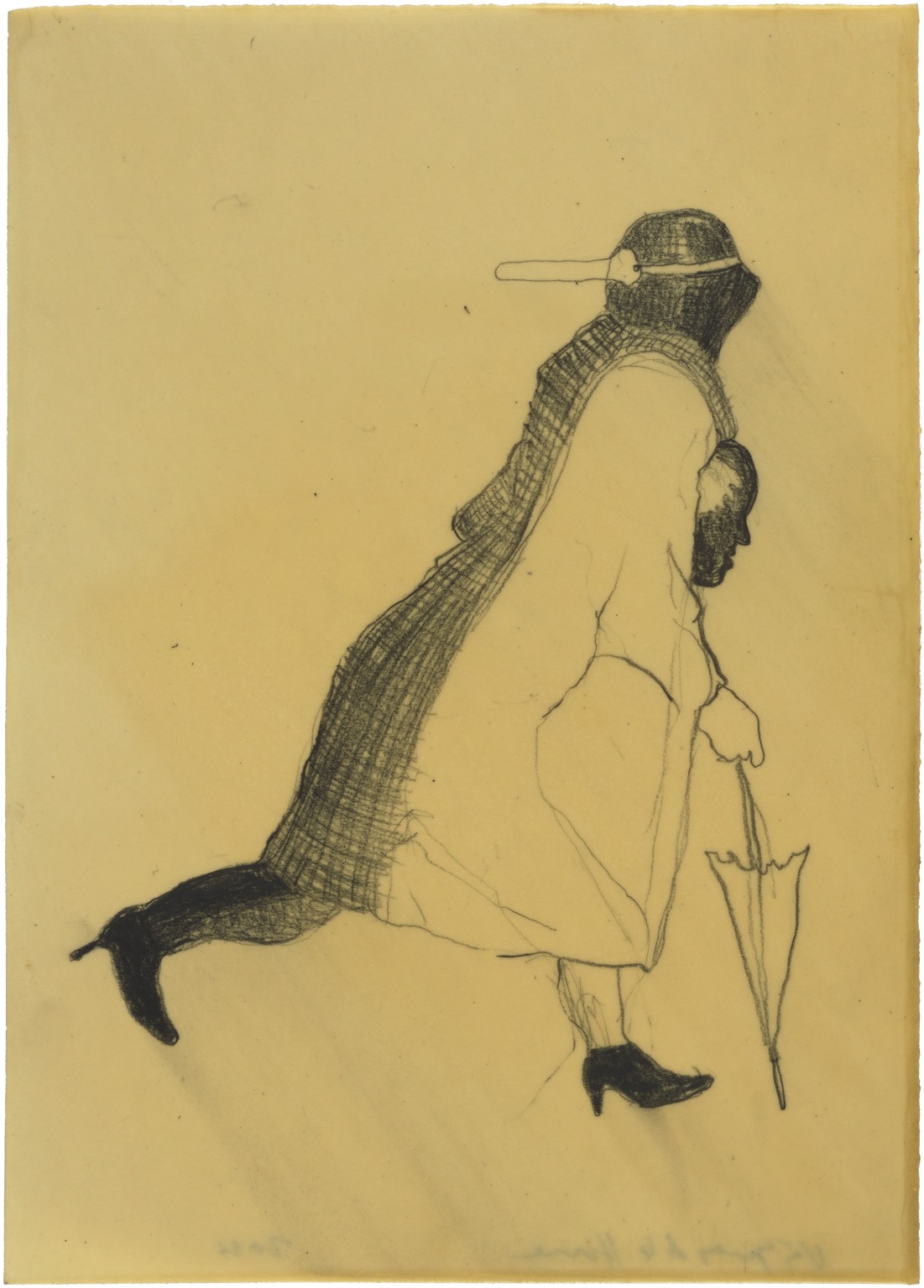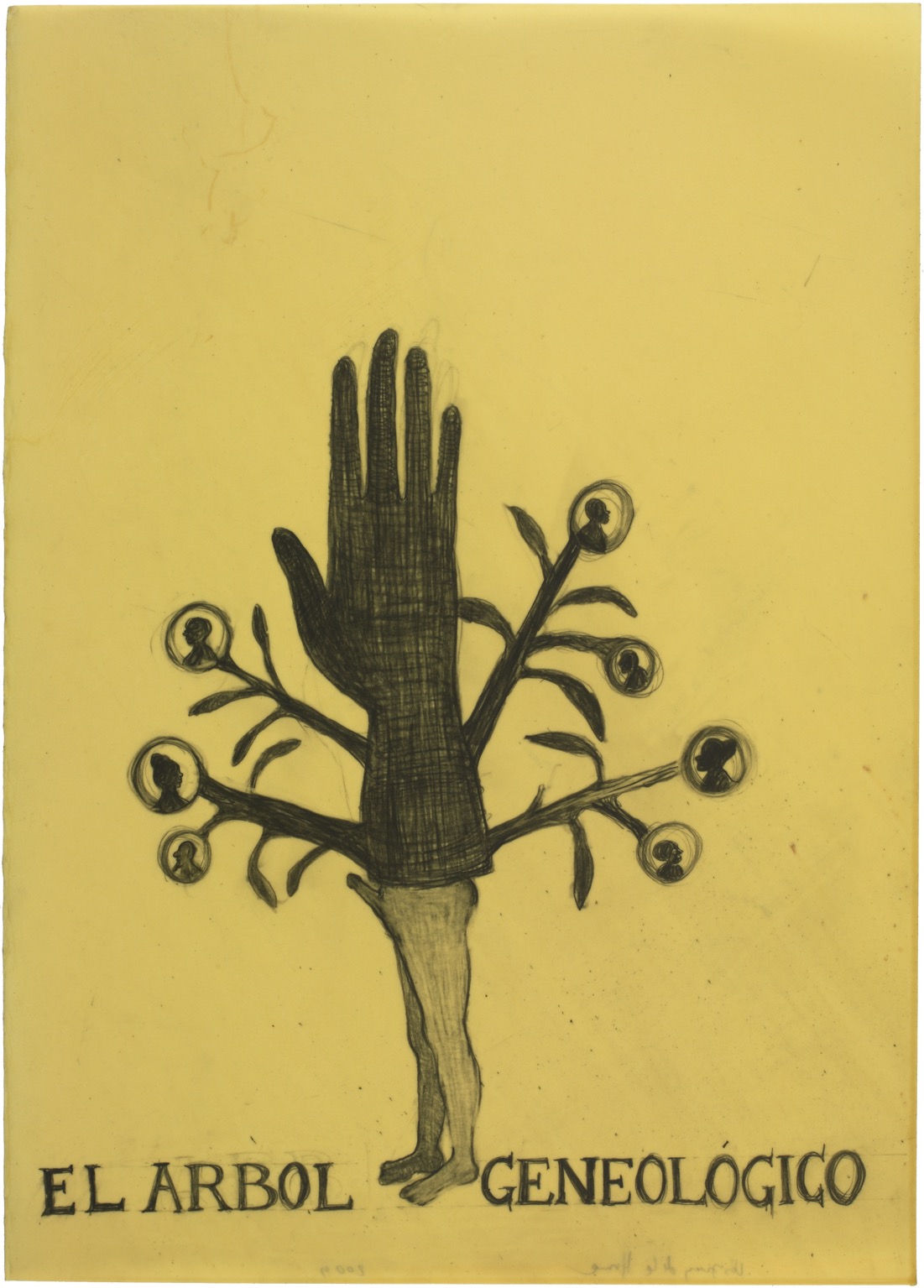Sandra Vásquez de la Horra
Tu pelo es mi bandera
Works

Eternamente
2010
Graphite on paper, waxed
66 × 51 cm

Reyna Olokun
2010
Graphite on paper, waxed
76 × 57 cm

Salvandote
2010
Graphite on paper, waxed
51 × 37 cm

El Martirio
2010
Graphite on paper, waxed
21 × 16 cm

Una Montaña llamada Deseo
2010
Graphite on paper, waxed
53 × 33 cm

Tras La Lluvia
2010
Graphite on paper, waxed
35 × 25 cm


My Corazon
2010
Graphite on paper, waxed
29 × 19 cm

Las Siamesas
2010
Graphite on paper, waxed
66 × 51 cm

La Fetiche
2010
Graphite on paper, waxed
70 × 50 cm

La Familia Ratonila
2010
Graphite on paper, waxed
38.5 × 26 cm

La Exibicionista
2010
Graphite on paper, waxed
38.5 × 26 cm

Anaconda
2010
Graphite on paper, waxed
66 × 51 cm

El Arzobispo
2009
Graphite on paper, waxed
70 × 50 cm

El Árbol geneológico
2009
Graphite on paper, waxed
70 × 50 cm

Me haces ver las estrellas
2008
Graphite on paper, waxed
50 × 35 cm

La Patinadora II
2007
Graphite on paper, waxed
38.5 × 28.5 cm

La Mano de Kali
2007
Graphite on paper, waxed
50 × 35 cm

anGhost II
2007
Graphite on paper, waxed
57 × 38.5 cm
Text
Nolan Judin Berlin are proud to present Tu pelo es mi bandera, Sandra Vásquez de la Horra’s first exhibition in Berlin. More than 60 recent works, created since the beginning of this year, are combined by 13 works produced between 2007 and 2009.
Sandra Vásquez de la Horra, born 1967 near the Chilean city of Valparaíso, is six years old when Augusto Pinochet seizes power in a coup, running the country as dictator for 17 years. Following a psychologist’s recommendation, the somewhat maladjusted but well-read and highly intelligent girl applies, at the age of twelve, for a place to study at the Academy of Fine Arts – and is accepted. Sandra Vásquez de la Horra soon encounters the protest movements and takes part in student demonstrations. At the age of 19 she moves to the capital and joins the artists’ and students’ association Chile Crea and its struggle for democracy. At the same time, the young artist is drawn into her studies of contemporary Latin American literature, but also of world literature, from Rimbaud to Kerouac. She engages with the religious beliefs and philosophies of a diverse range of cultures – and applies her anthropological gaze to South American myths and popular fairy tales, while discovering a passion for typography. In 1995, Sandra Vásquez de la Horra spends a year studying with Jannis Kounellis at the Kunstakademie in Düsseldorf, but afterwards returns to Chile. Four years later, she resumes her studies in Düsseldorf – this time with Rosemarie Trockel – and has lived in Germany permanently since then.
Continue reading
Sandra Vásquez de la Horra is first and foremost a draughtswoman. Although she has produced a number of sculptural works, it is the short distance between thought and paper that has turned out to be the medium best suited to her desire to render visible a strangely familiar yet at the same time uncanny universe. Her drawings, all of them in moderate scale, are not “beautiful” in the classical sense of the word, but on the other hand reveal much about the artist’s personality. They speak of fears, visualise dreams (or nightmares), recount memories. The dominance of the female figure as motive stands out: far more than half of her drawings are populated by female figures: mothers, nuns, saints, seductresses, prisoners, damned ones. They are objects of desire, while desiring themselves. They are deeply catholic or deeply pagan, but in any case radiate a raw sexuality. The numerically inferior male figures are soldiers, clowns, men with erections, men dangling off trees, little boys – or Christ. It strikes the observer that the figures mostly seem to hover on the paper – perspective plays almost no role in her compositions. Instead, they fixate the viewer with their gaze, radiating a certain voyeurism. A key element in Sandra Vásquez de la Horra’s drawings is her typography. The artist will often place words in the foreground, as a result of which they dominate the motif, indeed becoming the main sujet. Or she distributes these words across the entire page, ignoring questions of grammatical correctness. Mostly she uses Spanish, but also English and occasionally German. Sometimes she mixes all three languages in one sentence – lending a somewhat Dadaist touch to some of her works. Usually, the words reinforce the mysteriousness more than the elucidate the drawing.
After drawing – usually only with pencil, very rarely in colour – the artist immerses the paper in wax. This unusual procedure endows the works with a strange materiality and ultimately a certain haziness. The wax that seals the drawing generates a patina, the works appear timeless. Sandra Vásquez de la Horra uses everything, used paper, that she likes to find in flea markets. The treatment with wax unifies the papers to a certain degree, and leads the viewer back to concentrating on what is being represented.
After exhibitions in the Centre Pompidou in Paris, and the Museum Kunst Palast in Düsseldorf, the hitherto most extensive exhibition of Sandra Vásquez de la Horra’s works will be put on in the Bonnefantenmuseum in Maastricht, Holland. At the beginning of June, Hatje Cantz will publish an extensive large-format monograph. The artist is represented in many important museum and private collections.
Catalogue

Edited by Juerg Judin
Texts by Jonas Storsve und Alexander van Grevenstein
In German and English
250 × 330 mm
184 pages, hardcover
119 color ill., 21 b&w ill.
Published by Hatje Cantz, Ostfildern 2010
ISBN 978-3-7757-2655-9

























